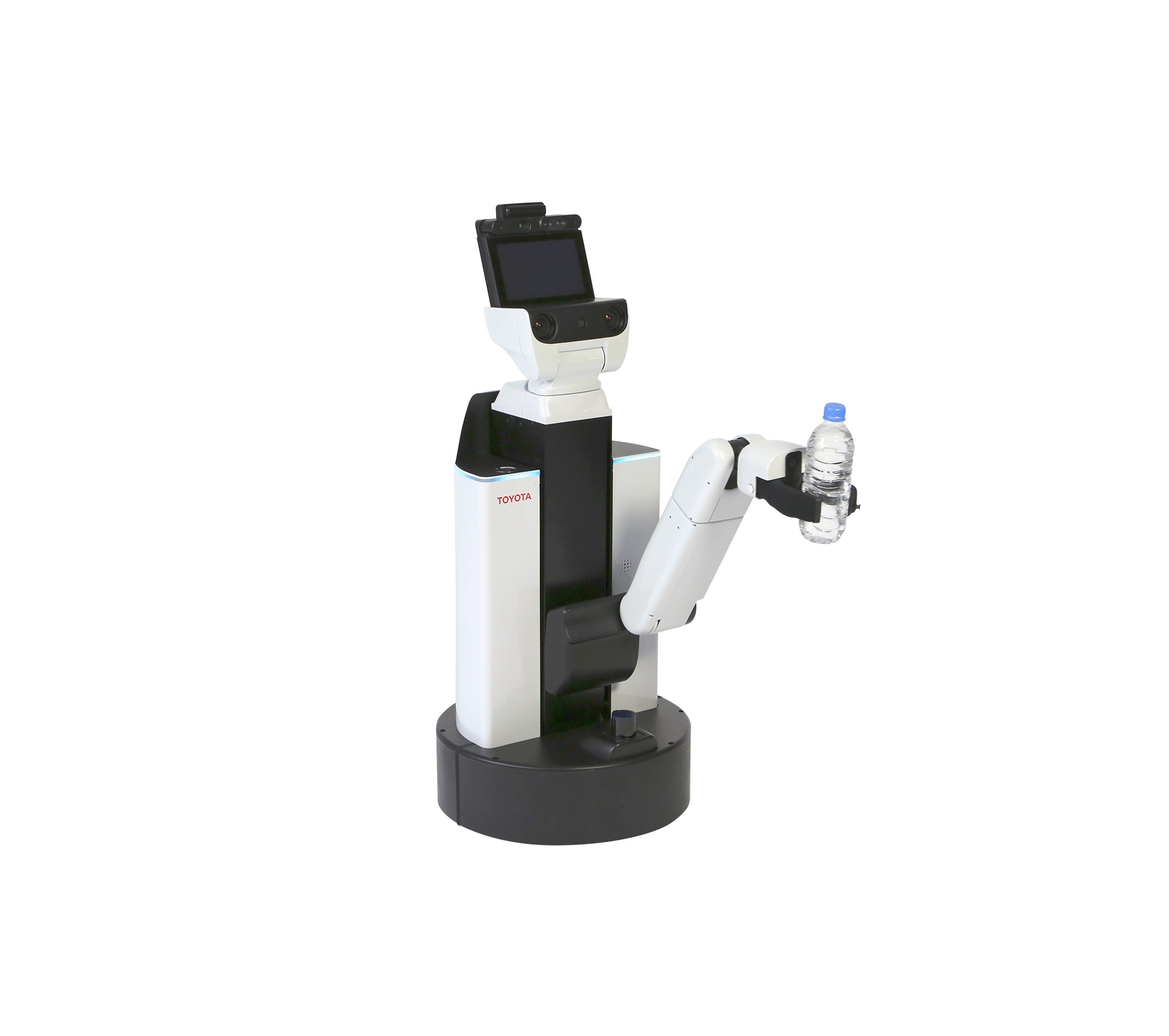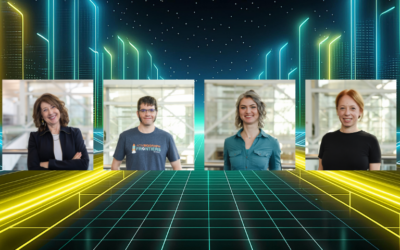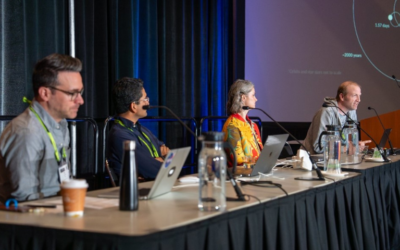Human Support Robot (HSR) © 2018 Toyota Motor Corporation
There are always new and wildly exciting projects shown at SIGGRAPH — particularly in the Emerging Technologies program. So much so, that it can feel a bit redundant to say, “The future is here!” But, with Toyota Research Institute‘s Human Support Robot (HSR), it just feels so right to say it:
The future is here.
HSR, shown in the SIGGRAPH 2018 Emerging Technologies program, is a mobile manipulation robot that performs physical tasks at home to improve quality of life. It can move around the house, keep watch over family members, and fetch objects. Particularly for people with mobility disabilities, HSR is a welcome advancement in robotics.
We connected with Akiyoshi Ochiai, senior engineer at Toyota Research Institute and one of the initial members of HSR development team, to learn all about HSR.
SIGGRAPH: What is unique about HSR in comparison to other mobile-manipulation robots?
Akiyoshi Ochiai (AO): An important feature of HSR is its size. Most mobile-manipulation robots are about the same size as humans. We purposely designed HSR to be as small as possible, while keeping its manipulation capability as high as possible. This effort made it safer and compact enough to operate in small homes.
AO: We started the HSR project in 2010. In the early stages of development, our focus was to emulate the capabilities of service dogs. From there, little by little we improved our understanding of the fundamental elements of mobile manipulators. As a research platform, HSR was also inspired by the PR2 mobile manipulation robot and ROS (Robot Operating System) developed by U.S.-based startup Willow Garage.
SIGGRAPH: How did the Toyota team for HSR come together?
AO: We started with a small, highly motivated group, formed from diverse teams in the robotics division within Toyota. Our vision of HSR attracted top-level engineers from other teams, as well as many grad students from our internship programs and academic research projects.
SIGGRAPH: Walk us through the creation process. What technology came together to bring HSR to life?
AO: We needed to make HSR compact and lightweight, but capable enough to work in real home environments. To resolve this conflict, we prioritized manipulation with whole-body motion. In order to make this happen, we had to develop lots of new technologies, including a whole-body-motion planning algorithm, robust localization system, real-time software architecture (to execute those components synchronously), and highly precise mechanical hardware. In application, we adopted state-of-the-art algorithms in computer vision and high-level planning to realize autonomous tasks such as fetch-and-carry and tidying-up.
AO: We are still exploring better ways to collaborate with people outside Toyota for development of home robotics.
HSR is now used at the Domestic Standard Platform League (DSPL) of RoboCup@HOME. Moreover, it has been adopted as a standard platform for the service robot competition of the World Robot Summit (WRS), which is scheduled to be held in 2020 in Japan after the Tokyo 2020 Summer Olympic Games. We are also collaborating with research labs in several universities.
It’s important in the future to build a sustainable and mutually beneficial relationship based on current platform strategy.
SIGGRAPH: What excites you about HSR?
AO: After long years of development, we obtained a reliable research platform. We are now able to experiment with many possibilities in autonomous robotic tasks. It is important for HSR to be autonomous, because autonomy will give people more free time. That’s why I started development of autonomous tidying-up tasks with HSR in the early 2010s.
Recent advances in machine learning give us lots of new tools that can make robots smarter. To explore such a new approach, I moved from Toyota Motor Corporation to Toyota Research Institute with HSR since 2017.
Akiyoshi Ochiai is a senior engineer at Toyota Research Institute. He is working on mobile manipulation, applying machine learning and mathematical optimization. Prior to his current role, he worked in Toyota Motor Corporation and is one of the initial members of the HSR (Human Support Robot) development team, on which he had been working in a variety of fields, including robotic communication software, system architecture design, autonomous navigation, task and motion planning for manipulation. He holds a Bachelor’s Degree and Master’s Degree in Mechanical and Aerospace Engineering in Robotics from Tokyo Institute of Technology (Tokyo Tech).




